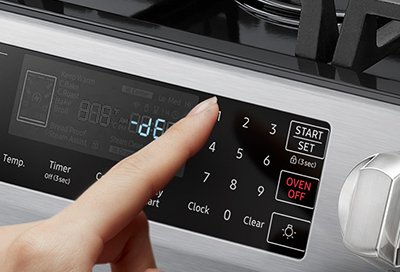
Here’s the deal: the Oe error code typically relates to a temperature sensor problem. It’s like when your body thermometer isn’t working right; you can’t accurately gauge if you have a fever. Similarly, your oven or range might not be able to accurately monitor or maintain the correct temperature. This can be frustrating when you’re just trying to bake your favorite chocolate chip cookies or whip up a dinner for the family. Let’s dig deeper and break this down in simple terms.
Understanding the Samsung Error Code Oe
So, what does error code Oe mean in the context of your Samsung oven or range? In the simplest terms, it’s a signal from your appliance that something’s amiss with the oven’s temperature sensor. Think of this sensor as the oven’s “thermostat,” which ensures your meals are cooked just right. If it’s not working, your oven can’t tell if it’s too hot or too cold, leading to undercooked or overcooked food.
You might be wondering how this sensor could malfunction. Well, several factors could be at play: it might be a loose connection, a faulty sensor, or even an electrical glitch. Just like how a loose wire can prevent your headphones from working properly, a disconnected sensor can throw your oven out of whack. The error code is your oven’s way of crying out for a little TLC to get back on track.
Before you stress out and call in the professionals, consider this: many times, simply resetting your appliance can clear the error code. It’s like rebooting your phone when an app freezes. The temporary reset can often solve minor issues, allowing your oven to function normally again.
How to Reset Your Samsung Oven or Range
Resetting might sound technical, but it’s typically as easy as pie. First, you’ll want to turn off the oven and unplug it from the electrical outlet—a bit like pressing the power button on your laptop to start fresh. Leave it unplugged for about 10 minutes. This downtime allows the appliance to reset its internal systems and can often resolve errors caused by temporary glitches.
Once you’ve waited, plug your oven back into the outlet and turn it on again. Check the display to see if the error code has disappeared. Remember, this simple reset is akin to taking a deep breath to clear your mind; it often resolves silly little hiccups.
However, if the error code persists after a reset, it might be time to roll up your sleeves or call in a professional. There could be a deeper issue at play, such as a defective sensor that needs replacement. But before you do that, try this reset process a couple of times—sometimes a little patience and multiple attempts can work wonders.
When Resetting Isn’t Enough: Next Steps
If resetting didn’t solve the problem, don’t worry. It’s not the end of the world. There are still steps you can take to tackle the stubborn Oe code. It’s like when your car won’t start after a quick jump; it might need a more thorough look under the hood.
Next, inspect the sensor itself. If you’re comfortable doing so, check for any visible signs of damage or loose connections. A broken sensor is like a twisted ankle – it needs more than a quick rest to heal. If the sensor looks damaged or the connections are loose, replacing it might be your best bet. Samsung technical support or a certified technician can help you find the right part and guide you through the replacement process.
If you’re still unsure, consider consulting the user manual or Samsung’s online resources for troubleshooting tips. They often provide step-by-step guidance that’s catered to your specific model, which can be extremely helpful. And if you’re not a DIY person? No worries! Professional help is just a call away.
Preventative Tips for Keeping Your Oven Error-Free
Prevention is always better than cure. Keeping your oven in tip-top condition can minimize the chances of encountering error codes in the future. Think of it as brushing your teeth to avoid cavities—a little maintenance goes a long way.
First, make it a habit to regularly clean your oven. Debris and grease can interfere with the sensors, just as dirty glasses can cloud your vision. A clean oven ensures sensors remain unobstructed and function correctly. It’s also a good idea to periodically check for loose wires or connections and ensure they’re secured.
Furthermore, avoid overloading your oven. Just like overpacking a suitcase can cause it to break, stuffing too much into your oven can strain its components. Be mindful of the oven’s capacity and follow the manufacturer’s guidelines.
Finally, stay informed. Keep your user manual handy and consider subscribing to updates or maintenance tips from Samsung. That way, any potential issues can be addressed before they become real headaches.
By following these steps and keeping an eye out for any unusual behavior, you can ensure that your Samsung oven or range continues to serve you well, free from pesky error codes. Remember, a little care and attention can keep your kitchen adventures running smoothly!